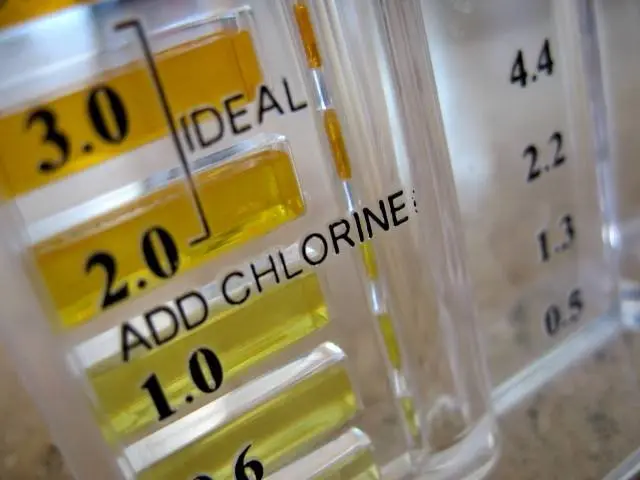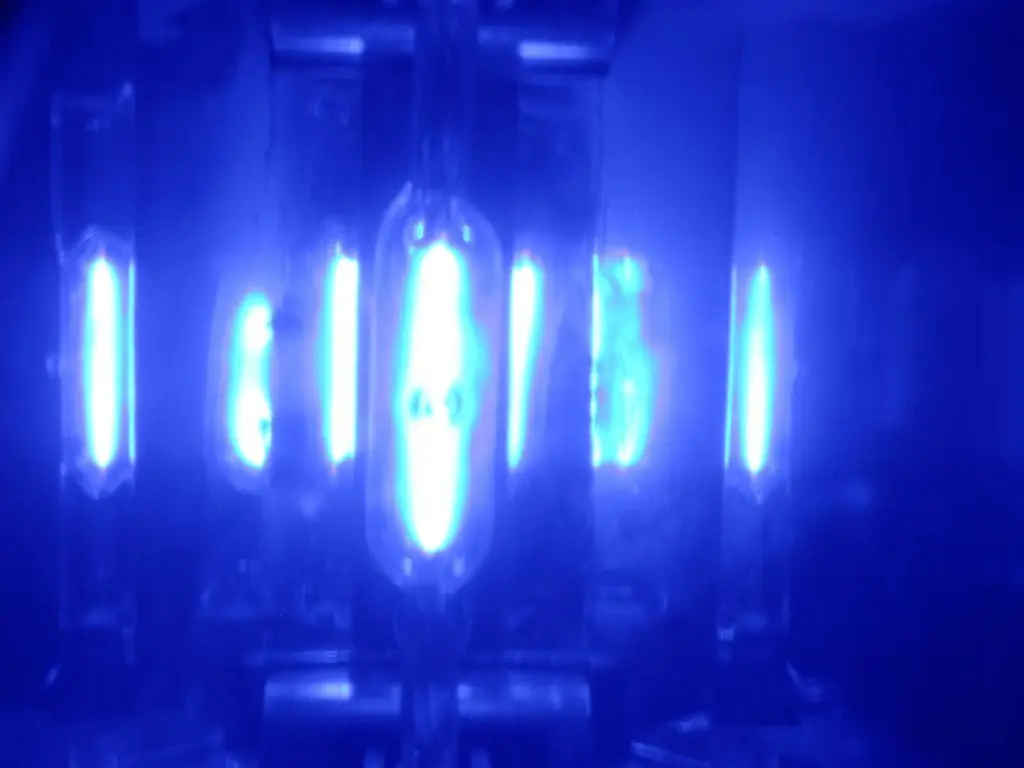
Sterilisation (also referred to as disinfection in other sources) is the final process to make potable water. It is where all microorganisms are killed or removed. This can be done in a variety of ways such as most commonly through chlorination. Chlorination is the process of adding chlorine to water in various forms (e.g. compressed gas, sodium hypochlorite solution or solid calcium hypochlorite) and in controlled amounts to disinfect it. Most water treatment systems will use chlorination to sterilise the water as it has a residual affect allowing it to disinfect up until it reaches the end point of use. Stored chlorinated water will require its monitoring of residual chlorine and top it up if required.
Sodium Hypochlorite
A Sodium Hypochlorite dosing system has the ability to monitor and maintain the correct chlorine dosage to ensure your water meets Australian standards. These plants can be mounted on a skid and installed in a building or placed in an air-conditioned container to keep the chlorine at its optimum condition.
Chlorine Dioxide
Chlorine dioxide (compressed gas) is also used in sewage treatment, industrial waste oxidation, cooling tower disinfection as well as food production and treatment, just to name a few. Chlorine dioxide is more expensive than liquid chlorine (sodium hypochlorite) but is less expensive than other sterilisation treatments such as ozonation.
Ozonation
Ozonation is an environmentally friendly way to treat water and air. As well as being environmentally friendly, ozone treatment has less side effects and possible allergies. Ozone is used widely in sterilising pools and spas.

Ultra Violet
Another way to sterilise water is to disinfect water by passing it through a ultraviolet (UV) light source. This will kill viruses, bacteria and parasites. UV sterilisation systems can come in a variety of sizes suitable for small projects through to large scale projects. UV sterilisation is only temporary and it is best install the UV treatment as close to the end point as possible. It is also not advised to store UV treated water in tanks. For more information on UV Water Disinfection System, read our post.
One of the most important parts of water recycling is ensuring that the reuse water is safe to use. If you have any questions on your water recycling system, contact us for a FREE QUOTE.
